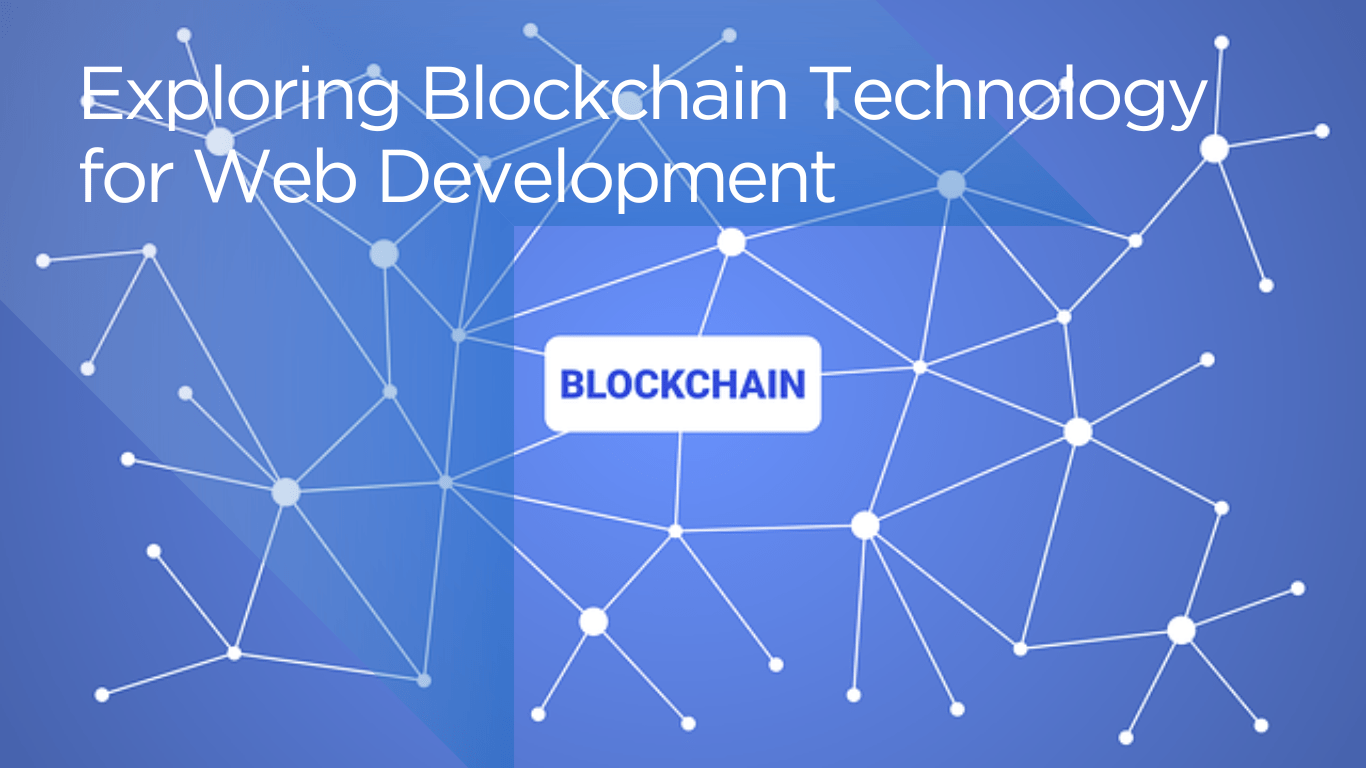Exploring Blockchain Technology for Web Development

Exploring blockchain technology for web development opens up new opportunities for creating decentralized, transparent, and secure applications. Here’s an overview of how blockchain can be integrated into web development:
1. What is Blockchain?
Blockchain is a decentralized, distributed ledger technology that securely stores data across multiple computers (or nodes). It allows for the creation of “blocks” that contain transaction data, which are linked in a chronological chain. Each block is cryptographically secured, making it immutable and transparent.
2. Applications of Blockchain in Web Development
- Decentralized Applications (DApps): Blockchain enables the creation of DApps, where data is not stored on a centralized server but rather on a blockchain. This eliminates the need for third-party intermediaries, offering enhanced security, privacy, and control over data.
- Smart Contracts: Smart contracts are self-executing contracts with the terms directly written into lines of code. Blockchain platforms like Ethereum allow developers to deploy these contracts to automate processes without human intervention, reducing costs and errors.
- Cryptocurrency Payments: Web applications can integrate cryptocurrency payments (Bitcoin, Ethereum, etc.), enabling faster, cross-border transactions with lower fees compared to traditional banking systems.
- Supply Chain Tracking: Blockchain can be used to create transparent and immutable records for products, allowing businesses to track the origin and journey of goods in the supply chain.
- Identity Management: Blockchain can be used for decentralized identity systems where individuals have control over their personal information, reducing the risks of identity theft and enhancing security.
3. Popular Blockchain Platforms for Web Development
- Ethereum: The most popular blockchain for creating decentralized applications and deploying smart contracts.
- Binance Smart Chain (BSC): Known for its faster transaction speeds and lower fees compared to Ethereum, making it suitable for DApps and DeFi (Decentralized Finance) applications.
- Solana: A fast blockchain platform that supports decentralized applications and smart contracts. It focuses on high-speed transactions.
- Polkadot: An interoperable blockchain that allows different blockchains to work together, enhancing scalability and communication.
- Hyperledger Fabric: A permissioned blockchain framework used for enterprise solutions with privacy and control.
4. Web3 Technologies and Libraries
To integrate blockchain into your web applications, you’ll need Web3 technologies. Some popular tools and libraries are:
- Web3.js: A JavaScript library that interacts with the Ethereum blockchain, enabling you to create decentralized applications in a browser environment.
- Ethers.js: A lightweight JavaScript library for interacting with the Ethereum blockchain, allowing for wallet integration, contract deployment, and transaction management.
- IPFS (InterPlanetary File System): A protocol for decentralized file storage that allows you to store files on the blockchain or across a distributed network.
- Metamask: A popular browser extension that acts as a wallet to interact with Ethereum-based applications. It provides users with a secure way to manage their cryptocurrencies and interact with DApps.
5. Security and Privacy Considerations
Blockchain provides enhanced security features like cryptographic hashing and immutability. However, integrating blockchain into web development introduces new challenges:
- Smart Contract Vulnerabilities: Incorrect coding or logic flaws in smart contracts can lead to security risks and hacks.
- Private Key Management: Private keys give users control over their assets; losing a private key can result in the loss of access to funds.
- Scalability: Blockchain networks can become congested, leading to higher transaction costs and slower speeds.
6. Tools for Blockchain Web Development
- Truffle Suite: A development environment and testing framework for Ethereum-based DApps.
- Remix IDE: An open-source web tool for developing, deploying, and testing smart contracts written in Solidity.
- Ganache: A personal blockchain for testing and development of Ethereum-based applications.
- Hardhat: A framework for building and testing Ethereum-based applications.
7. Challenges of Blockchain in Web Development
- Scalability: Most public blockchains face issues with scalability. Solutions like Layer-2 (e.g., Polygon) are being developed to address this.
- Complexity: Blockchain development requires a different skill set from traditional web development. Learning about consensus mechanisms, cryptography, and distributed systems is crucial.
- Regulatory Concerns: As blockchain technology evolves, regulatory frameworks are still catching up, and legal issues around data privacy, crypto transactions, and smart contract enforcement need consideration.
8. Future of Blockchain in Web Development
The future of blockchain in web development looks promising, with trends like decentralized finance (DeFi), non-fungible tokens (NFTs), and decentralized identity management gaining traction. Blockchain is expected to play a key role in the development of Web3—the next evolution of the internet—where users have more control over their data and digital assets.
Conclusion
Integrating blockchain into web development brings exciting new possibilities for decentralized applications, enhanced security, and transparency. However, it requires developers to understand blockchain concepts and tools to build effective solutions. As the technology matures, it will continue to transform how web applications are developed and used.